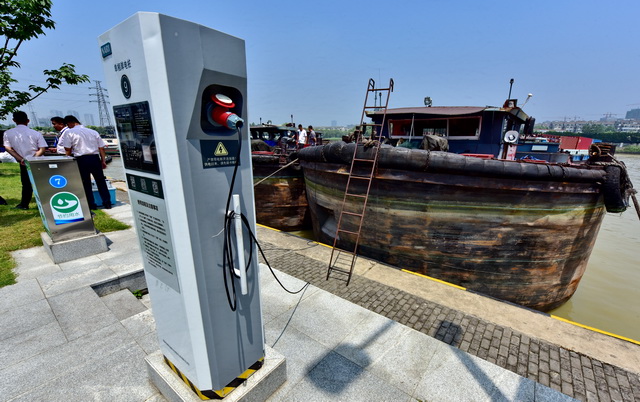The ship’s auxiliary engine is usually used for power generation when the ship is berthing to meet the ship’s power demand. The power demand of different types of ships is different. In addition to the domestic power demand of the crew, container ships also need to supply power to the refrigerated containers; The general cargo ship also needs to provide power for the crane on board, so there is a large load difference in the power supply demand of various types of berthing ships, and sometimes there may be a large power load demand. The marine auxiliary engine will emit a large number of pollutants in the working process, mainly including carbon dioxide (CO2), nitrogen oxides (NO) and sulfur oxides (SO), which will pollute the surrounding environment. The research data of the International Maritime Organization (IMO) shows that diesel powered ships all over the world emit tens of millions of tons of NO and SO into the atmosphere every year, causing serious pollution; In addition, the absolute amount of CO emitted by global maritime transport is large, and the total amount of CO2 emitted has exceeded the annual greenhouse gas emissions of countries listed in the Kyoto Protocol; At the same time, according to data, the noise generated by the use of auxiliary machinery by ships in the port will also cause environmental pollution.
At present, some advanced international ports have adopted shore power technology in succession and enforced it in the form of law. The Port Authority of Los Angeles of the United States has passed legislation [1] to compel all terminals within its jurisdiction to adopt shore power technology; In May 2006, the European Commission passed the bill 2006/339/EC, which proposed that EU ports use shore power for berthing ships. In China, the Ministry of Transport also has similar regulatory requirements. In April 2004, the former Ministry of Transport issued the Regulations on Port Operation and Management, which proposed that shore power and other services should be provided for ships in the port area.
In addition, from the perspective of ship owners, the rising international crude oil price caused by energy shortage also makes the cost of using fuel oil to generate electricity for ships approaching the port rise continuously. If shore power technology is used, the operating cost of ships approaching the port will be reduced, with good economic benefits.
Therefore, the port adopts shore power technology, which not only meets the national and industrial requirements for energy conservation and emission reduction, but also meets the needs of enterprises to reduce operating costs, improve terminal competitiveness and build a “green port”.
Post time: Sep-14-2022

